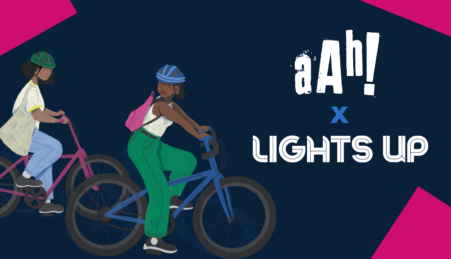
By Emma Heathcote
Third year Information Communication students worked hard to create a student led presentation session where they discussed subjects such as Transmedia and Object-based broadcasting. They were working to a brief created through a partnership between the BBC R&D and Manchester Metropolitan University. BBC R&D is the research and technical side to the work the BBC do. One of the aims of the projects was to discover and explain how people use different media and technology. There are different factors which affect how a person interacts with these, such as age and ethnicity, that were highlighted in the projects.
The projects are useful to the BBC as research can be conducted about groups which can be hard to reach. The diverse student base means that there are a number of ethnic minority groups represented whom students can connect with easier and so are able to get information regarding media and technology use. The presentations were centred on the idea of the ‘BBC model’ which is about audience behaviour – how and why people use media. The results of the research and the presentations themselves help BBC R&D develop its model further. Students are younger and so have a different relationship with technology and can provide a broad range of results which can help the BBC be more responsive to its viewers.
The sessions highlighted the fact that students were hardworking and knowledgeable and managed to convey effectively the extensive research they had put into making the presentations. There were 10 student-led presentations covering a wide range of topics of which a summary is provided below.
The first presentation was about the popularity of user-generated content and the aim the group had was to investigate how the BBC can increase the use and popularity of user-generated content. Through a number of online interviews with online content creators. The students found that people were creating content and putting it online because they wanted to meet friends, because it was something they were interested in themselves but also because they found it fun. Interestingly, the research showed that the main reason people were putting content online was for amusement and said that any financial gain was just a bonus, rather than a primary reason. It also highlighted the fact that new technology and technological advances make it easier for people to put content online and perhaps this has increased people’s desire put their work out there. User generated content was also shown to be a fast growing trend amongst people and may only continue to grow as changes and advances in technology do.
The next presentation was about object-based broadcasting. The aim of the project was to discover whether age and media literacy affect how people use object based broadcasting to enhance their media experience. A part of this, which could be problematic for some people, is the fact that it needs personal information so content can be personalised to people. However, the group’s research showed that 42% of people would be happy to share this information if they got what they wanted in return. Personalised gaming is also related to object-based broadcasting. Here the group found that people will display stronger emotional reactions to content which is targeted at them. However, the research showed that people were anxious about how easily accessible their information was. This was consistent across the age groups investigated, as even young people who have grown up with technology were surprised with how much information was freely available to people. It also showed that there was a correlation between people’s media literacy and their like of object-based broadcasting.
The next two groups discussed the topic of ‘the quantified self‘. The first group investigated how users engage in self-tracking through the use of wearable technology. Research showed that users didn’t want wearable technology used in the work place, even if it supposedly was beneficial for them, because they thought it was too intrusive. However, they used it for social purposes, for example health apps, which allowed them to motivate each other. Members of the group itself said that they had used the apps they were investigating themselves but stopped because they found them time consuming. The second group looked into the potential development of self-tracking devices. They again showed the positives of wearable technology through health apps on smartphones as it allowed people to achieve a healthy lifestyle. They showed that people liked that it allowed them to enhance the communication between users and could offer more encouragement from friends.
The fifth group focused on the ecology of devices through investigating how users interact with different devices such as smartphones and tablet computers in different environments. They found that there were fewer interactions in public and when users were in the home 34% of them used a second screen to fill the gap between commercial breaks. They also found that global connectivity allowed users to experience a range of ideas from lots of people, not just the ones they know.
The next two groups discussed Transmedia. The first group focused their presentation on Top Gear and Doctor Who. They found evidence for ‘media meshing’ (using several devices at the same time to engage with a programme) for viewers of these programmes as people used a second, handheld device to comment on the TV programme while watching it. They discussed the fact that perception of characters can change across social media and reading something online can affect how someone watches a programme. The group found that although social media and interpersonal contact (including family and friends) can affect how someone views a character, it didn’t stop them from watching the programme. The second group spoke about fans of programmes. They talked about how Transmedia was used by fans for emotional and personal purposes as it allowed them to find out more on the topic and they could communicate with other fans and create debates about the programme. Research also found there were different levels of fans from casual ones to those who really enjoyed finding out more about the programme and engaging in further discussion of the programme and reading fan fiction. Interestingly, it was often older viewers who were the more invested fans, rather than younger people who may have more exposure to the internet.
The next topic was brands and celebrities and the perceived value of the TV licence fee. Research found that viewing figures decreased when celebrities left programmes, potentially showing the importance of celebrities in relation to people’s interest in TV shows. Interestingly, the group said that interviewees didn’t count actors in TV shows as being celebrities but just simply as actors in the show. They also discussed the cost of a TV licence and questioned whether it was worth it if people weren’t watching many BBC programmes.
The penultimate group researched whether young people are still interested in BBC content. They found that young adults watch TV programmes which they related to their own lives but also found there was a social aspect to what they choose to watch as they watched what their friends did. The group found that potentially because some young adults are still living at home they are still influenced by family in terms of what they watch. Another finding was that because there were many other activities which interest young people they watch less TV. However the group said this could also be because young adults find BBC content too political or it may simply be because they do not have enough time.
The final presentation was about ethnic minorities and how they respond to TV. The group’s aim was to explore the relationship that minority groups in Manchester have with BBC content. The groups found that one of the problems minority groups had was that there was stereotyping in programmes and so an untrue picture was painted which they could not relate to. Because of this they turned to channels in their own language. However they also did so because of the language barrier as they could not understand BBC content. One solution to this the group made was to offer subtitles. However, they found the language barrier was more of a problem for the older generation and that the younger generation preferred British content perhaps because they have been westernised and so knew less about their own culture and could connect with British shows easier.
Students said they found that the experience helped them gain transferable skills such as confidence. Although they said it was hard to express themselves as well as they would have liked to due to nerves presenting in front of a group, this can be useful as it highlights skills students can potentially work on. Overall the presentations help to make the course more relevant to students which can make it more interesting and useful to them.
Emma is in her second year studying English. She likes 19th Century novels and the Harry Potter series.






Leave a reply